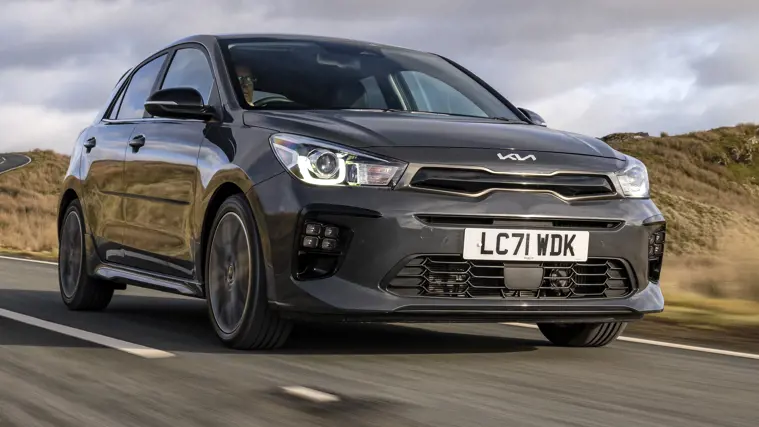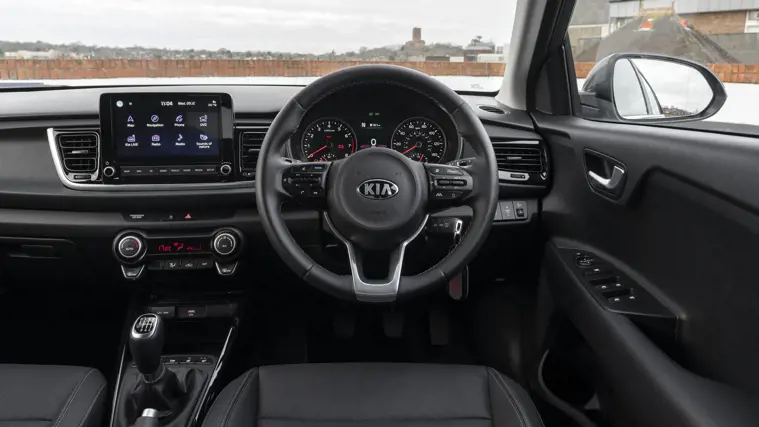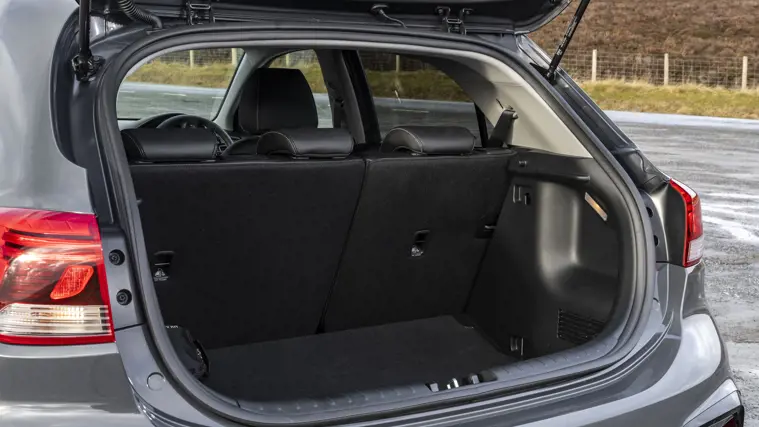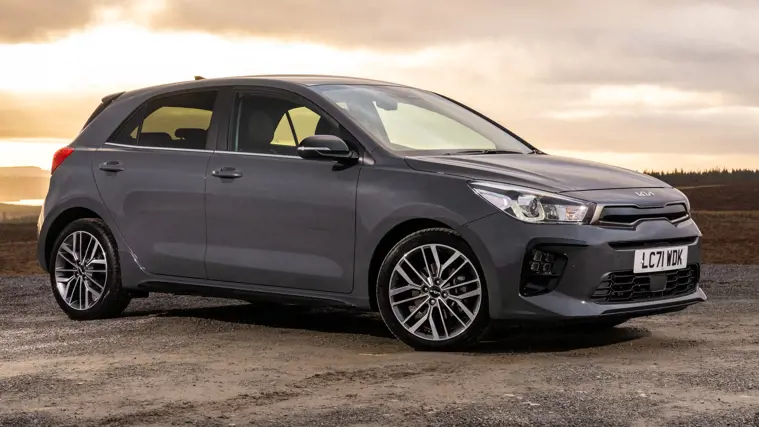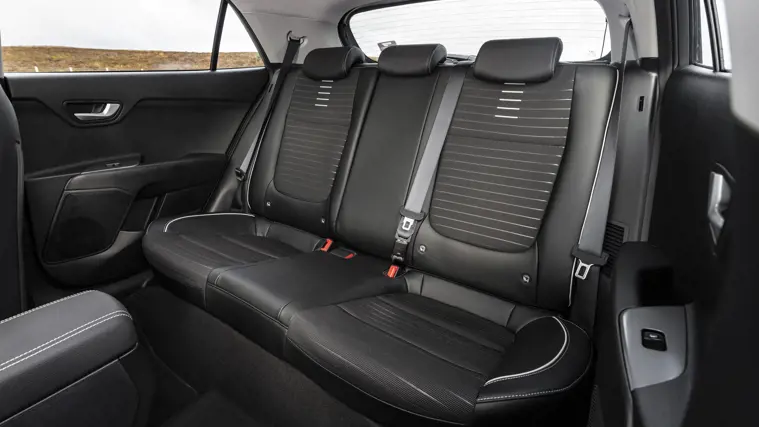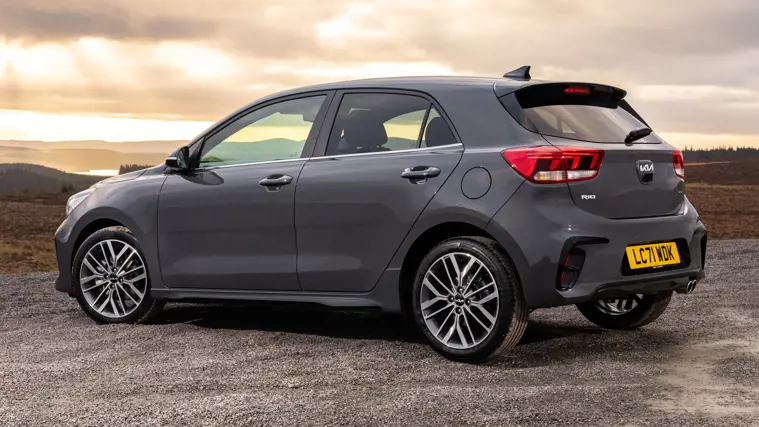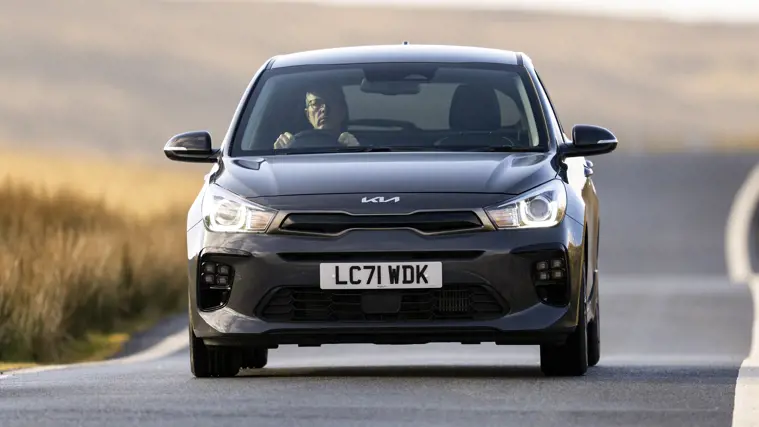Kia Rio Review
The latest generation of the Korean carmaker’s supermini is more competent and better equipped than ever before.
Strengths & weaknesses
- Spacious interior and boot
- Well equipped
- High quality interior
- Dull to drive
- Too much engine choice
- No longer a budget option
Taking on the likes of the Ford Fiesta, Volkswagen Polo, Vauxhall Corsa, Renault Clio, Skoda Fabia and a plethora of other accomplished models in the supermini segment is a tall order.
The new Kia Rio has some serious rivals to overcome in order to persuade buyers to hand over their hard-earned and the Korean carmaker has responded to the challenge by producing a car that is a step up in quality from previous generations, leaving behind its reputation as a ‘budget’ model.
The most obvious manifestation of that more grown-up character is the Rio’s design. The exterior exudes the look of a sophisticated supermini, matching the Polo in its sharp, eye-catching looks. The new Rio is slightly longer and lower than before and has a shorter rear overhang (the distance between the wheel and the bumper) and longer front overhang, so it does look sleeker and sportier. This appearance is enhanced further by squared-off features and sculpted lines. In short, this is a good-looking car.
Interior quality has been improved, too, as the cabin is now filled with more soft-touch surfaces that ever before. The cabin’s practicality is also better than ever before: the boot capacity has increased by 37 litres to 325 litres (just 5 litres less than the Skoda Fabia, but significantly more that the Ford Fiesta and Volkswagen Polo), while the rear has ample space for adults, with kneeroom particularly impressive.
On the road, the Rio is perfectly good, if not quite up to the levels of the class leaders. The steering is accurate and light enough at low speed to be usable in town; the balance is fine, as is the amount of grip; and the ride is on the firm side of comfortable. All in all, it’s a solid performer – which will be perfectly acceptable to most buyers.
Equipment levels are good for a supermini, with plenty of standard kit on all versions – including Bluetooth, air conditioning and LED daytime running lights.
There’s a quartet of engines – 1.0, 1.25 and 1.4-litre petrol units, plus a 1.4-litre diesel – but it’s more than enough choice for the segment. All are pretty efficient (unless you mate an automatic gearbox to the largest petrol engine), which should keep running costs down, while there’s also Kia’s seven-year warranty to provide peace of mind and minimise repair bills.
In a very competitive segment of the market, Kia has improved its offer yet again, with an attractive package. It doesn’t have the familiarity of the Fiesta, Polo, Corsa or Clio perhaps, or some of the refinement or handling abilities of some of these models, but it is definitely more grown up than ever before, cuts a dash on the road, is well equipped and then there’s that warranty – so there are certainly plenty of reasons why the new Rio is worthy of consideration.
Key facts
| Warranty | Seven years / 100,000 miles |
|---|---|
| Boot size | 325 litres |
| Width | 1725mm |
| Length | 4065mm |
| Height | 1445mm |
| Tax | £120 to £200 in first year, £140 thereafter |
Best Kia Rio for...
Best for Economy – Kia Rio 1.4 CRDi 77PS 6-speed manual ISG
As you’d expect, the diesel model is the economy champion of the range, with its 80.7mpg official consumption and 92g/km CO2 emissions.
Best for Families – Kia Rio 1.0 T-GDi 100PS 5-speed manual ISG
The three-cylinder 1.0-litre engine is a fun and flexible engine that is ideal for urban families using the Rio as a runabout. Nippy enough for such duties, it can also manage 62.8mpg on the combined cycle.
Best for Performance – Kia Rio ‘First Edition’ 1.0 T-GDi 120PS 6-speed manual ISG
The ‘First Edition’ trim level, available for the initial launch period, is the only Rio variant fitted with a high-powered three-cylinder engine, which reduces the 0-62mph time to a range-best 9.9 seconds.
One to Avoid – Kia Rio 1.4 4-speed automatic
Combining an automatic gearbox with the 1.4-litre petrol engine does nothing for performance or economy: in fact, the 0-62mph time increases by 1.6 seconds (to 13.5 secs), and economy and CO2 emissions worsen to 46.3mpg and 140g/km.
History
- February 2017 The Rio goes on sale in the UK
Understanding Kia Rio names
Trim level 2
The amount of standard equipment that comes with the Rio depends on the trim level. Understanding them is simple: the entry level is 1, followed by 2 and then 3 at the top of the range.
Engine 1.0 T-GDi 99bhp
The size of the engine is shown in litres (here it's a small 1-litre engine). The letters CRDi indicate a diesel engine. Other Rios are petrol-powered: there may be no letters after the engine size or the label T-GDi, which is used on models with the latest efficient petrol technology. The engine's horsepower may also provided because some engines of the same size are available with different amounts of power.
Gearbox 5-speed manual ISG
Manual gearboxes fitted to the smaller Rio engines have five gears, while others have six gears. All are combined with Intelligent Stop & Go, which is a stop-start system that switches the engine off when you're stopped in traffic and restarts it automatically as you move off. An automatic option is also available.
Kia Rio Engines
Petrol: 1.0 T-GDi, 1.25, 1.4
Diesel: 1.4 CRDi
The petrol engines available with the Kia Rio offer a relatively narrow range of power outputs and it’s hard to see why the company offers three options – 1.0, 1.25 and 1.4 – when one is clearly the best option, in terms of performance and economy.
The 99PS 1.4-litre is a new all-aluminium fuel-injected unit with a 56.6mpg official fuel consumption figure and emissions of 114g/km. The 0-62mph time is an unspectacular 11.9 seconds. The engine is combined with a six-speed gearbox, but it is also available with a four-speed auto ’box, which makes the engine even less desirable, thanks to a reduction of the fuel consumption to 46.3mpg and increases CO2 emissions to 140g/km. Performance also suffers, with 0-62mph to 13.5 seconds, so it's hard to find any justification for it, unless clutch-and-stick use is difficult for buyers.
The 84PS 1.25-litre unit is also hard to recommend, even though 58.8mpg and 109g/km are entirely respectable figures, while 12.5 seconds for the 0-62mph acceleration test isn’t terrible.
The main reason why these engines are hard to recommend is not that they’re undesirable (they’re not), but because the three-cylinder turbocharged 1.0-litre unit is better in every area. So there’s more power (100PS, or 120PS with First Edition models), a quicker 0-62mph (10.4 or 9.9 seconds), better fuel economy of 62.8mpg (60.1mpg with the First Edition) and lower emissions of 102g/km (107g/km).
In common with three-cylinder units, it sounds almost sporty. It’s a good little engine and the obvious choice if not opting for a diesel.
The 1.4-litre diesel is the choice of anyone for whom economy is the overriding factor (and an annual mileage in excess of 10,000 miles makes it worthwhile). Depending on whether you opt for the 77PS or 90PS versions, official figures of 80.7mpg or 74.3mpg are impressive. Performance isn’t exactly sprightly, but there’s a decent amount of urgency low in the rev range.
Kia Rio Trims
1, 2, 3 and First Edition
Kia keeps its trim levels easy to understand with numerical names, with a higher-specified flagship First Edition model also on sale at launch.
The 1 trim comes with air conditioning, front electric windows, remote locking, electrically adjustable heated door mirrors, a 3.8-inch display screen, Bluetooth, LED daytime running lights, steering wheel-mounted controls, a four-speaker audio system, and safety equipment that includes ESC, VSM and Hill-start Assist Control.
Step up to 2 (which is likely to be the most popular choice among buyers) and Kia adds the likes of 15-inch alloy wheels (instead of 15-inch steel wheels on 1 cars), a leather-trimmed steering wheel and gearshifter, electric windows all round, electric folding mirrors with LED indicator lights, DAB digital radio, a 5-inch colour display screen, a six-speaker audio system, reversing camera and rear parking sensors, USB charging ports in the front and rear, cruise control with a speed limiter, and Autonomous Emergency Braking and Lane Departure Warning systems.
Choose a car in 3 trim and additional equipment includes 16-inch alloys, automatic air conditioning with an automatic defogging system, black faux leather upholstery, a 7-inch touchscreen with satellite navigation, heated front seats and steering wheel, rain-sensing front wipers, privacy glass on the rear side windows and tailgate, Android Auto and Apple CarPlay connectivity and Bluetooth with voice recognition.
The First Edition cars also feature 17-inch alloys, a smart key entry system and engine start/stop button, stainless steel pedals, black and red faux leather upholstery and LED rear lights.
Kia Rio Reliability and warranty
It’s too early to say how reliable the new Kia Rio will be, but the previous (third-generation) Rio came 71st overall in the 2016 Driver Power survey, but just 22nd in the list of most reliable cars.
In the table of manufacturers, Kia comes 10th out of 32 manufacturers, which is also a good result.
Also laudable is Kia’s seven-year/100,000-mile warranty, which is by some margin the best in the industry and should offer buyers lots of peace of mind if they encounter any issues.
Used Kia Rio
As a brand new car at time of writing, there are no used examples yet on the market – and they should take a while to filter through.
New and nearly new examples of the latest Rio are available on BuyaCar, with discounts ranging from £892 to £1,968, depending on engine type or trim level.
Other Editions
.jpg?width=400&height=225&format=webp)
Rio (2011 – 2017)
The Kia Rio stands out from other used superminis thanks to its seven-year warranty

